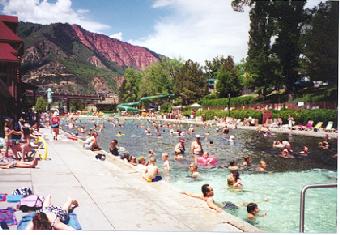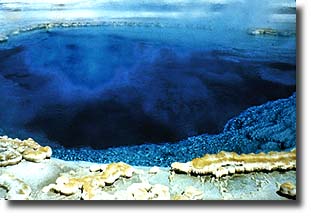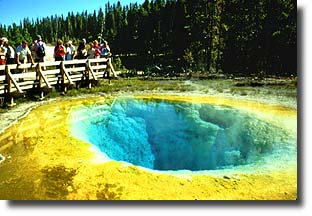Hot Springs!
[Next]
Naturally heated water from deep within the earth has been prized for centuries for its
ability to soothe tired muscles and restore the spirit.
Many hot springs like Glenwood Springs, pictured at the right, operate as commercial resorts. Hot springs water
is mixed with cold water before being piped to the pools. The warmer pool has a temperature of 104o - 107 o F after mixing.
In addition to the warmth, hot spring waters commonly contain minerals such as sodium, calcium, and magnesium.


More exotic mineral chemisties are found in many hot springs around the world including
iron, manganese, arsenic, and lead. Some gold deposits are also believed to be hot spring related. Both mineral
content and bacteria can give hot springs water and associated deposits unusual colors.
Americans are most familar with the hot springs at Yellowstone National Park in Wyoming. Many minerals are found
here giving the springs a rainbox of colors. The spring at left is Sapphire Pool in Yellowstone National Park
Yellowstone is also the discovery site for an unusual bacteria that lives only in hot springs.
This bacteria is used by biotech companies throughout the world to generate the quantities of experimental pharmaceutical
need in clinical trials.
